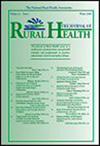Hearing aid acquisition patterns among US Veterans who use VA health care
Abstract
Purpose
The primary objective of this observational study was to describe the population of Veterans who did and did not receive a hearing aid following an incident hearing loss diagnosis during the 12-year study period. We also sought to measure the relationship between hearing loss severity and hearing aid acquisition and explore how this association differs according to Veterans’ urban/rural residential status. Understanding associations of clinical or demographic characteristics with hearing aid acquisition by US Veteran health care users may contribute to more effective treatment of hearing loss.
Method
We examined all Veteran electronic health records to identify participants with an incident (new) hearing loss diagnosis between January 2011 and June 2023. Hearing loss was identified using International Classification of Diseases diagnosis codes and audiogram results. Hearing aid fittings were identified using Current Procedural Terminology codes. Poisson regression models were used to compute rate ratios and 95% confidence intervals of hearing aid acquisition.
Results
Among 256,409 Veterans with an incident hearing loss diagnosis, the prevalence of hearing aid acquisition was 81% (n = 206,438) during the study period. Among Veterans who received hearing aids, a greater proportion were older, male, White, non-Hispanic, married, and from higher income groups. The average number of days between hearing loss diagnosis and hearing aid fitting was less than 1 year (M = 200 days; SD = 502 days). The association between hearing loss severity and hearing aid acquisition was stronger among urban Veterans compared to rural Veterans, and there was a significant interaction between hearing loss severity and urban/rural status (p < .0001).
Conclusions
This large, national cohort study provides the first description of hearing aid acquisition patterns among Veterans using VA health care. Hearing aid uptake was high overall but varied by demographic and geographic factors. The observed differences may reflect structural challenges or variations in perceived need. These findings can help inform targeted VA programs aimed at improving timely uptake of hearing care, particularly among rural Veteran populations.

 求助内容:
求助内容: 应助结果提醒方式:
应助结果提醒方式:


